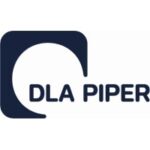-
How active is the securitisation market in your jurisdiction? What types of securitisations are typical in terms of underlying assets and receivables?
According to a survey conducted jointly by the Japanese Bankers Association and the Japan Securities Dealers Association, there were 218 reported securitisation transactions with underlying assets located in Japan throughout fiscal year 2023. The aggregate issue price of the securities issued in relation to those transactions was approximately JPY 4.21 trillion. As this number is based on information provided through voluntary reporting, the actual number of securitisation transactions that took place in that period could be much larger.
Typical types of securitisations are residential mortgage-backed securities, commercial mortgage-backed securities, collateralised debt obligations, securitization of lease receivables, auto loan receivables, consumer loans, bank card loans, shopping loans, credit card loans, sales receivables and commercial bills.
-
What assets can be securitised (and are there assets which are prohibited from being securitised)?
In terms of the types of assets that can be securitised, there is no restriction under Japanese law specifically applicable to securitisation.
The types of receivables that are commonly securitised include: (i) receivables on loans secured by residential mortgages; (ii) credit card receivables; (iii) lease receivables; (iv) auto-loan receivables; and (v) account receivables, which include promissory notes and electronically recorded monetary claims.
Real estate is another type of asset commonly securitised in Japan.
For securitizations using a special purpose company (tokutei mokuteki kaisha, TMK), established under the Act on the Securitisation of Assets (Law No. 105, 1998) (the Securitisation Act) which is a law specifically dedicated to facilitating asset securitisation, there are some limited exceptions in respect of the types of assets that may be securitised, such as securitization of partnership interests, silent partnership interests and beneficial interests in a trust whose trust asset is cash.
-
What legislation governs securitisation in your jurisdiction? Which types of transactions fall within the scope of this legislation?
Securitisation in Japan is governed by laws and regulations applicable to specific types of transactions such as the Civil Code (Law No. 89, 1896), the Trust Act (Law No. 108, 2006) and the Financial Instruments and Exchange Law (Law No. 25, 1948) (FIEL). The Securitisation Act authorises and regulates the use of two types of vehicle specifically designed for securitisation, namely the TMK and the specific purpose trust (tokutei mokuteki shintaku, TMS). TMKs are frequently used as issuer vehicles for Japanese asset securitisation transactions. However, the use of those vehicles is not mandatory and many securitisation transactions involve schemes that are not based on the Securitisation Act.
-
Give a brief overview of the typical legal structures used in your jurisdiction for securitisations and key parties involved.
The trust is the mostly commonly used vehicle in securitisation transactions in the current Japanese securitization market. Typically, the originator, as the settlor, will convey its asset(s) to a trustee and, in return, acquire beneficial interests in the trust. Thereafter, the settlor will sell the beneficial interest to investors and thereby raise funds. Alternatively, the originator may be able to sell the beneficial interests in the trust to the underwriter, investor, a TMK or other types of special purpose vehicles. In cases where a TMK acquires the beneficial interest, the TMK will issue securities to its investors and the proceeds from the issuance are paid to the originator as payment for the beneficial interest in the trust.
Also, pursuant to an amendment to the Trust Act made in 2006, the use of a declaration of trust is available in Japan.
In addition to a trust structure explained above, TMKs are special purpose vehicles (SPVs) frequently used in securitisation transactions as a bankruptcy remote vehicle holding the target assets.
For the securitisation of real estate, limited liability companies (godo gaisha, GKs) are also frequently utilised as SPVs. Usually each investor enters into a silent partnership contract (tokumei kumiai, TK) with the GK, under which the investor makes a contribution to the GK and the GK distributes the profits arising from the asset (in this case, real estate) that it acquires using the funds contributed by the investor. Further, a general incorporated association under the Act on General Incorporated Association and General Incorporated Foundations (Law No. 48, 2006) is typically used to create a bankruptcy-remote holding company of the SPVs.
-
Which body is responsible for regulating securitisation in your jurisdiction?
The Japanese Financial Services Agency (JFSA) is responsible for regulating most of the vehicles typically used for securitisation transactions (please refer to (4) above). Some vehicles are not regulated – for instance, the declaration of trust is normally structured in a way that requires no trust business license by limiting the number of investors.
The JFSA is also responsible for regulating securities, derivatives and loan transactions, which are the main components of typical securitisation structures. The intermediaries of these transactions (e.g., securities companies) as well as derivative providers and lenders are required to obtain a license from or register with the JFSA.
The JFSA delegates a part of its power to other governmental bodies such as the Securities and Exchange Surveillance Commission and local Finance Bureaus.
-
Are there regulatory or other limitations on the nature of entities that may participate in a securitisation (either on the sell side or the buy side)?
On the sell side (the originator side), there are no license, registration or other statutory qualification requirements in general. Originators are nonetheless often granted a license from a regulator since the activities of originators that are relevant to the underlying assets often require a license (e.g., lending activities require a banking, insurance company or money lending business operator license). In most securitisation structures, an originator is appointed as a servicer of receivables and, if the originator engages in specific types of collection activities therefor (e.g., collection of defaulted receivables), a servicer license may be required for the originator. Accordingly, in practice, originators refrain from engaging in such activities and a special servicer is instead appointed therefor.
On the buyer side (the investor side), with respect to securitisation in the form of securities transactions, there are no license, registration or other statutory qualification requirements in general; however, in practice, it is often the case that only qualified institutional investors (e.g., financial institutions, and an entity that holds securities in the amount of 1 billion yen and has notified the JFSA to such effect) are contractually permitted to purchase securities from the perspective of the principle of suitability and/or avoiding the public offering regulations under the FIEL. On the other hand, if the investors participate in securitisation by extending asset backed loans to SPVs, the investors must be either licensed banks, insurance companies or moneylending business operators.
-
Does your jurisdiction have a concept of “simple, transparent and comparable” securitisations?
With respect to the capital adequacy of banks and other financial institutions, the Japanese regulatory framework treats the “simple, transparent and comparable” (STC) securitisation favourably, under which a lower risk weight is applied to the STC securitisation.
-
Does your jurisdiction distinguish between private and public securitisations?
Depending on the type of instrument issued for the target securitization transaction (e.g., bonds, shares or trust beneficiary certificates) and the method of the offering (e.g., public offering or private placement), the issuance may be subject to public disclosure requirements applicable to certain securities in accordance with FIEL. Such requirements operate as a general rule for all securities issued in Japan. There are no special rules or regulations applied to securitization transactions in this context in Japan.
In cases where the offering of the securities will be a public offering, the issuer will be required to file a security registration statement (yuka shoken todokedesho, SRS) pursuant to FIEL. There is no filing requirement under FIEL for private placements, but there are some simple notification and document delivery requirements in relation to prospective purchasers.
-
Are there registration, authorisation or other filing requirements in relation to securitisations in your jurisdiction (either in relation to participants or transactions themselves)?
In general, no registration, authorization or filing is required for securitisations, except for securitisations using a TMK or a TMS under the Securitisation Act. Securitisations using a TMK or TMS require submission of a prior notification to the local finance bureau of a business commencement notification or a TMS notification, respectively. Documents such as the TMK’s asset securitisation plan (i.e., a document setting forth the basic particulars concerning the asset securitisation to be carried out by the TMK) must also be attached to this notification. Further, if the offering of securities takes the form of a public offering, the filing of a SRS by the issuer will be required pursuant to FIEL.
-
What are the disclosure requirements for public securitisations? How do these compare to the disclosure requirements to private securitisations? Are there reporting templates that are required to be used?
If the offering of securities takes the form of a public offering, an SRS must first be filed with the competent local financial bureau. FIEL contains two broad classifications of securities: clause I securities and clause II securities. Clause I securities include, among others, TMK bonds and preferred shares issued by TMKs under a TMK structure. Clause II securities include, among others, trust beneficiary interests issued under a trust structure and TK interests issued under a GK-TK structure and collective investment schemes (as defined in FIEL). Exemptions to registration requirements are different for each of these two classifications of securities.
An SRS shall contain, in a prescribed form, information concerning:
- the securities offered (terms of securities and offering); and
- the issuer (including a description of its business, affiliated companies, officers and employees, assets, shareholdings, stated capital and financial statements); or
- in the case of certain securities, such as those relating to investment trusts and securitization, the investment structure (including a description of the investment structure, investment policy and underlying assets, if any).
Even in case of private securitization, disclosure by an information memorandum will be usually made following the rules and guidebooks announced by the Japan Securities Dealers Association. Material information that will be covered in such information memorandum are mostly similar to those required for an SRS.
-
Does your jurisdiction require securitising entities to retain risk? How is this done?
On March 15, 2019, the Japanese Financial Services Agency (JFSA) published certain amendments to its guidelines on the capital requirements for banks and certain other financial institutions. These amendments became effective as of March 31, 2019. The amendments overhauled the methods of calculating risk-weighted assets in the case of financial institutions holding securitization products. In particular, in the event that a financial institution holds securitization products but is unable to confirm that the originator holds at least five percent exposure concerning such securitization products, a higher risk weight than normal (i.e. triple risk weight, up to 1,250% (full capital deduction)) shall be applicable in calculating such financial institution’s risk-weighted assets unless certain exemptions apply. Such amendments will be applicable only in respect of securitization products acquired by financial institutions on or after April 1, 2019. It will not be applicable to securitization products held by financial institutions as of March 31, 2019.
To meet the risk retention requirements, in general, the originator must hold at least five percent of the aggregate amount of exposure of the underlying assets of the relevant securitization. However, it should be noted that the portion of the exposure substantially not borne by the originator due to hedging with guarantees or CDSs is to be excluded from the calculation of the percentage of the exposure held by the originator. More specifically, the originator shall hold:
- an equal portion of all tranches, the total amount of which is at least five percent of the aggregate exposure of the underlying assets of the relevant securitization;
- all or part of the most junior tranche, the total amount of which is at least five percent of the aggregate exposure of the underlying assets of the relevant securitization;
- if the most junior tranche is less than five percent of the aggregate exposure of the underlying assets of the relevant securitization, all of such tranche and part of other tranches, the total amount of which is at least five percent of the aggregate exposure of the underlying assets of the relevant securitization; or
- an exposure that is equal to or greater than the exposure required to be held by the originator under the above three meth
The Japanese risk retention rules do not directly require that the originator or sponsor hold a certain amount of exposure but create an indirect requirement by establishing the above rule whereby a higher risk weight is applied when financial institutions acquire securitization products that do not comply with the risk retention rules. Please also refer to (12) below.
-
Do investors have regulatory obligations to conduct due diligence before investing?
There are no regulatory obligations on investors to perform due diligence on securitization products before investing in Japan. However, under the Japanese Financial Services Agency (JFSA)’s guidelines on capital requirements for banks and certain other financial institutions (amended as of 31 March 2019), unless a certain exemption applies, a higher risk weight will be applied when calculating a financial institution’s risk-weighted assets if that financial institution is unable to confirm that an originator holds at least five percent exposure in respect of the relevant securitization products. An example of one exemption to the application of a higher risk weighting is where, after being analyzed in depth, it can be determined that the underlying assets have not been originated inappropriately. Therefore, as a practical measure, financial institutions investing in securitization products typically establish a due diligence framework and confirm compliance with Japanese risk retention rules not only at the time of acquisition of the securitization products but also each time they are required to calculate the risk weighting of its assets for capital adequacy purposes.
-
What penalties are securitisation participants subject to for breaching regulatory obligations?
In general, there are no license, registration or other statutory qualification requirements for securitisation participants (originators and investors) and as such, these participants are generally not subject to regulatory obligations (please refer to (6) above). If the public offering regulations are applicable (please refer to (8) above), breaches of such regulations, such as a failure to file an SRS, may result in administrative charges or a criminal penalty on the issuer of the securities (e.g., SPVs).
-
Are there regulatory or practical restrictions on the nature of securitisation SPVs? Are SPVs within the scope of regulatory requirements of securitisation in your jurisdiction? And if so, which requirements?
There are no regulatory restrictions on the nature of securitisation SPVs, and using a specific type of SPV is not required by the regulations. Practically, bankruptcy remoteness is a key aspect required for SPVs.
-
How are securitisation SPVs made bankruptcy remote?
Securitization SPVs and their assets are managed separately from the originator’s assets to mitigate any commingling risk and to achieve bankruptcy remoteness. In that context, securitization SPVs are typically prohibited from engaging in any business other than the contemplated securitization transaction by restricting the business objectives and powers contained in their articles of incorporation. Furthermore, their directors are appointed from among certified accountants or other third parties independent from the originator and their equity interests are held by an independent party such as a Cayman SPC, which is ultimately owned by a charitable trust, or a Japanese general incorporated association (ippan shadan hojin). SPVs and their directors and interest holders will also waive their rights to commence insolvency proceedings against the SPV. In addition, as described in item (17) below, the sale of assets from the originator to the SPV is made on a “true sale” basis.
-
What are the key forms of credit support in your jurisdiction?
If a trust structure is used as the securitization SPV, the beneficial interests in the trust are usually divided into two tranches: (i) senior trust beneficial interests, which will be sold to investors for financing; and (ii) subordinated trust beneficial interests, which will be held by the originator for credit enhancement purposes. In addition, the following forms of credit enhancement are often used: third party/insurance company guarantee, cash over-collateral, default trap, acceleration of redemption upon the occurrence of certain trigger event, cash reserve and dynamic reserve.
-
How may the transfer of assets be effected, in particular to achieve a ‘true sale’? Must the obligors be notified?
Typically, assets are transferred to SPVs by assignment. The assignment of receivables can be made by agreement between the assignor and the assignee and does not require any other particular formalities. In general, a trust is established by way of an agreement between the settlor and trustee; however, it is possible for a settlor to establish a trust through a declaration of trust, which only requires the notarization of the settlor’s signature.
To perfect an assignment of receivables from third parties, notice to or consent from the debtor bearing the notarized date of such notice or consent is required. Where the assignor is a judicial person, a special registration system has been established. To perfect the transfer against the debtor, notice to (together with a certificate of registration, if any) or consent from the debtor is necessary. However, in a typical securitization of receivables, issuing such notice to a debtor will be delayed until the occurrence of a contingent trigger event, such as the commencement of the originator’s insolvency proceeding after the closing date.
While there is no statutory provision clearly addressing the criteria of “true sale”, various factors will be taken into account, including:
- the relevant parties’ intentions as they appear in the relevant transactional documents;
- the transfer of the risk/interest of the assets and the right to control the assets from the originator to the SPV(s);
- the originator’s right or obligation to repurchase the assets;
- the perfection of the transfer of assets (especially perfection against third parties);
- the reasonableness of the purchase price of assets; and
- the accounting treatment of the assets in the originator’s balance sheet.
-
In what circumstances might the transfer of assets be challenged by a court in your jurisdiction?
In corporate reorganization proceedings of an originator, if a sale of receivables is re-characterized as a secured loan rather than a “true sale”, such receivables may be exercised only within the corporate reorganization proceedings and will only be paid pursuant to the reorganization plan approved by a court. Furthermore, in insolvency proceedings, a security interest may be extinguished if a petition by the bankruptcy trustee or such other person with standing is approved by the court.
In insolvency proceedings of the originator, a transfer of assets may be voided if such transfer was made with the originator and the transferee knowing at the time that it would be disadvantageous to the originator’s estate and creditors. Separately, any gratuitous or similar transfer made by the originator within six months prior to becoming insolvent may be rescinded, irrespective of whether or not the originator or the counterparty knew at the time that such transfer would be harmful to the creditors of the originator. In addition, if the transfer of assets constitutes the provision of collateral to certain creditors for outstanding debts after the originator became insolvent or a petition for commencement of insolvency proceeding was filed, such transfer may be voided. Similarly, such transfer may be voided if it constitutes a provision of collateral which was made within 30 days of the originator becoming insolvent and the relevant creditor knew at the time that such provision of collateral would be harmful to other creditors of the originator.
If the originator and the transferee of the assets have executed an asset transfer contract, but have not fully performed their obligations thereunder, such as the payment of the purchase price and the transfer of receivables, by the time of commencement of an insolvency proceeding, the insolvency trustee (or such other person with standing) of the originator may elect either to terminate such asset transfer contract or continue to perform its obligations thereunder. However, in the context of a typical securitization, it is unlikely that both obligations will not have been performed at the time an insolvency proceeding is commenced against the originator.
Under the Civil Code of Japan, even if the transfer of receivables is contractually prohibited or restricted, such transfer will not be invalid but the debtor may refuse to pay the transferee in the case where the transferee knew of the prohibition or restriction or ought to have known but for their gross negligence.
-
Are there data protection or confidentiality measures protecting obligors in a securitisation?
The Personal Information Protection Act of Japan protects the personal information and personal data of obligors. In principle, originators are required to obtain consent from obligors prior to disclosing the personal data of obligors to transferees of receivables (e.g., SPVs) under this act; however, since receivables are assignable in principle, in general, it is assumed that obligors have given this consent as long as the personal data is disclosed for the management of receivables by transferees.
-
Is the conduct of credit rating agencies regulated?
The credit rating agencies registered with the JFSA are required to establish proper internal controls and follow statutory procedures in their assignment and disclosure of credit ratings. The regulations generally follow the IOSCO Code of Conduct Fundamentals for Credit Rating Agencies and aim to ensure the quality and integrity of the rating process, the independence and avoidance of conflicts of interest and the responsibilities to the investing public and issuers. Among other prohibitions, the registered credit rating agencies and their analysts are prohibited from advising on matters materially influencing credit ratings such as the structures of relevant financial products. A press release must be issued without delay after an assignment of a credit rating. Private ratings are not subject to these regulations.
Under the FIEL, credit rating agencies are permitted to conduct business without said registration; however, if securities companies or other financial institutions conduct solicitations using a credit rating assigned by an unregistered credit rating agency, among other requirements, they are required to explain to potential investors the unregistered status of such credit rating agency, assumption, significance and limitation of credit ratings and an outline of applicable rating policies and methodologies. If the unregistered credit rating agency is an affiliate of a registered credit rating agency and designated by the JFSA, the scope of this mandatory explanation is limited.
-
Are there taxation considerations in your jurisdiction for originators, securitisation SPVs and investors?
In general, gains arising from the transfer of assets will be subject to Japanese corporate income tax when originators are Japanese corporations. If assets have been placed in a trust, gains or losses will be recognized when the beneficial interest in the trust representing such assets is transferred to a third party.
For tax purposes, as a general rule, a trust is treated as a pass-through vehicle which is not subject to corporate tax at the trust level. The beneficiary of the trust is deemed as holding the underlying assets and will be taxed accordingly unless such trust is categorized as a certain type of trust that is taxed at the trust level, such as a group investment trust or a taxable corporate trust.
If a specified purpose company (tokutei mokuteki kaisha), commonly known as a TMK, is used as an issuer SPV and, among other requirements, more than 90 percent of distributable profits are distributed as dividends to investors, interest amounts payable on bonds issued by the TMK and dividends payable on equity securities issued by the TMK are deductible for corporate income tax purposes.
A common tax arrangement for investors is to enter into a silent partnership contract (TK) with a limited liability company (GK) and thereunder make contributions to the GK. In turn, the GK distributes profits arising from the assets purchased using such contributed funds. Under this “GK/TK” structure, the profits distributed by the GK to investors that are party to the TK are deductible for GK’s corporate income tax purposes.
If an investor is a non-Japanese corporation with no permanent establishment in Japan for Japanese tax purposes, in principle, the investor will be subject to Japanese withholding tax. Foreign investors are not required to file Japanese tax returns and taxation is finalized by withholding tax. Tax treaties between Japan and an investor’s tax residence country may provide an exemption or a reduced rate for such Japanese withholding tax. In addition, if an issuer SPV issues bonds within Japan using Japanese book-entry system or issues Eurobonds outside Japan, interest amounts payable on such bonds may be exempt from Japanese withholding tax, subject to compliance with certain procedural requirements.
-
To what extent does the legal and regulatory framework for securitisations in your jurisdiction allow for global or cross-border transactions?
As for choice of law, under the Japanese Act on Application of General Rules, the legality of a transfer of receivables is determined by the law governing the receivables. Meanwhile, the legal effect of rights and obligations arising directly from the transfer agreement is determined by the governing law under the transfer agreement. The residency of the relevant parties (transferor/transferee/obligor) is not relevant. Therefore, for example, if a Japanese corporation securitizes sales receivables against a foreign corporation, which is governed by a foreign law, under a transfer contract executed between the Japanese corporation (as the transferor) and a SPV (as the transferee), the perfection of the transfer against the obligor or other third parties will be governed by the applicable foreign law, while the legal effect of the transfer itself will be governed by Japanese law. In the case of a transfer of real property, the laws of the country where such real property is located will govern.
As for SPVs, Cayman or other offshore entities have often been used as SPVs. However, recently, Japanese entities owned by a general incorporated association (ippan-shadan-hojin) are more often used as SPVs thanks to recent legislation that enabled establishing Japanese SPVs that are bankruptcy remote.
In relation to enforcement, a final and binding judgement rendered by a Japanese court may be enforced against an obligor’s assets located in Japan by compulsory execution procedure (kyousei shikkou).
A final judgement rendered by a foreign court may be enforced in Japan provided that certain criteria is satisfied; namely:
- the jurisdiction of the foreign court is acknowledged by Japanese law or treaty;
- the losing party has received the service of summons or orders necessary for commencing the procedures (excluding service by public notice or other similar means of service) or has responded in the litigation;
- the contents of the judgement or the procedure are not contrary to the public order or good morals of Japan; and
- there is a reciprocal guarantee concerning the recognition of judgements between Japan and the relevant foreign jurisdiction.
-
How is the legal and regulatory framework for securitisations changing in your jurisdiction? How could it be improved?
Currently in Japan there is no public disclosure or reporting system specifically tailored for securities issued under securitization transactions. Public disclosure requirements are only applicable depending upon the types of securities (e.g., bonds, shares, or trust beneficial interests) and/or the nature of the offering (e.g., public offering or private placement).
If a public disclosure or reporting system specifically tailored for securitization were established, it would lead to greater transparency of securitization in Japan and an increase in the layers and numbers of the investors.
As for securitization of future receivables, the legality of transfer of future receivables is statutorily assured under the Civil Code of Japan amended as of April 1, 2020. If the validity of the securitization of future receivables after the originator’s bankruptcy becomes statutorily clear, it might improve investors’ return predictability and have securitization of future receivables gain more popularity.
If collateral is provided to secure payment of bonds issued under a securitization transaction, the Secured Bonds Trust Act will apply and a trust company shall be appointed to manage the collateral for the benefit of bond holders. However, the requirements, procedures, and restrictions are so stringent and inflexible and secured bonds subject to the Secured Bonds Act are rarely issued. However, there is growing jurisprudence among legal scholars that the Secured Bonds Act (and its stringent requirements) may not be applicable to secured bonds governed by a foreign law and issued outside Japan. Ideally, the statute will be amended to reflect this understanding.
As for covered bonds, there is no specific legislation addressing covered bonds and only contractual covered bonds may be issued as structured covered bonds by Japanese issuers. Recently, a few covered bonds were issued by Japanese financial institutions and the investors enjoy double recourse to the issuers’ proprietary assets and the cover pools by using a total return swap eligible for a close-out netting under the Act on Close-out Netting of Specified Financial Transactions Conducted by Financial Institutions (the “Netting Act”). However, the Netting Act is not a statute specifically governing covered bonds and any covered bonds issued thereunder will be contractual bonds and not statutory covered bonds. Specific legislation or JFSA’s public guideline under which Japanese financial institutions may issue statutory covered bonds would enhance the credibility and stability of, and lead to the reduction of the issuance costs of, such covered bonds.
-
Are there any filings or formalities to be satisfied in your jurisdiction in order to constitute a true sale of receivables?
As explained in (18) above, a true sale of receivables will be substantially determined taking into various relevant factors and neither filings nor formalities will be required to be satisfied for constituting a true sale of receivables.
Japan: Securitisation
This country-specific Q&A provides an overview of Securitisation laws and regulations applicable in Japan.
-
How active is the securitisation market in your jurisdiction? What types of securitisations are typical in terms of underlying assets and receivables?
-
What assets can be securitised (and are there assets which are prohibited from being securitised)?
-
What legislation governs securitisation in your jurisdiction? Which types of transactions fall within the scope of this legislation?
-
Give a brief overview of the typical legal structures used in your jurisdiction for securitisations and key parties involved.
-
Which body is responsible for regulating securitisation in your jurisdiction?
-
Are there regulatory or other limitations on the nature of entities that may participate in a securitisation (either on the sell side or the buy side)?
-
Does your jurisdiction have a concept of “simple, transparent and comparable” securitisations?
-
Does your jurisdiction distinguish between private and public securitisations?
-
Are there registration, authorisation or other filing requirements in relation to securitisations in your jurisdiction (either in relation to participants or transactions themselves)?
-
What are the disclosure requirements for public securitisations? How do these compare to the disclosure requirements to private securitisations? Are there reporting templates that are required to be used?
-
Does your jurisdiction require securitising entities to retain risk? How is this done?
-
Do investors have regulatory obligations to conduct due diligence before investing?
-
What penalties are securitisation participants subject to for breaching regulatory obligations?
-
Are there regulatory or practical restrictions on the nature of securitisation SPVs? Are SPVs within the scope of regulatory requirements of securitisation in your jurisdiction? And if so, which requirements?
-
How are securitisation SPVs made bankruptcy remote?
-
What are the key forms of credit support in your jurisdiction?
-
How may the transfer of assets be effected, in particular to achieve a ‘true sale’? Must the obligors be notified?
-
In what circumstances might the transfer of assets be challenged by a court in your jurisdiction?
-
Are there data protection or confidentiality measures protecting obligors in a securitisation?
-
Is the conduct of credit rating agencies regulated?
-
Are there taxation considerations in your jurisdiction for originators, securitisation SPVs and investors?
-
To what extent does the legal and regulatory framework for securitisations in your jurisdiction allow for global or cross-border transactions?
-
How is the legal and regulatory framework for securitisations changing in your jurisdiction? How could it be improved?
-
Are there any filings or formalities to be satisfied in your jurisdiction in order to constitute a true sale of receivables?













